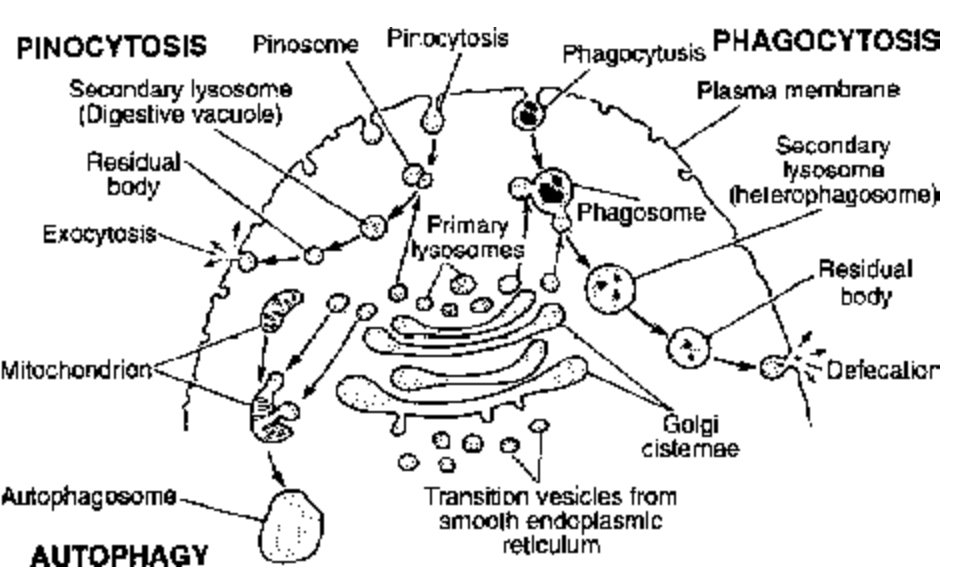
Lysosomes
Structure of Cell of Class 11
Discovered by Christian de Duve (1955) from liver cells of rats.
Contain about 50 different hydrolysing (digestive) enzymes called acid hydrolases like nuclease, phosphatase, glycosidase, sulfatase, lipase, etc.
Single-membrane spherical bodies having a size of 0.08 to 0.8 µm.
Forms GERL complex with Golgibodies and ER.
Popularly called as “suicide bags”, occur in all the animal cells (except R.B.C.), Euglena, yeast and fungi.

Fig. Functions of lysosomes
Types :
1. Primary lysosomes : Arise from Golgi bodies, contain enzymes synthesised in the RER.
2. Secondary lysosomes : Known as digestive vacuoles after primary lysosomes combine with phagosome.
3. Autophagic vacuoles : During starvation the primary lysosomes become autophagic because they engulf and digest the cell organelles.
4. Residual bodies : Secondary lysosomes as well as the autophagic vacuoles containing undigested matter.
Function :
Primarily meant for heterotrophic nutrition.
Being abundant in leucocytes, these help in defence against microbes etc.
Help in fertilization, differentiation and metamorphosis by performing histolysis.
Dispose off the worn out, damaged and dead cells.
In osteoclasts, help in replacing cartilage and unwanted part of bone.
There are a variety of lysosomal deficiency diseases; due to lack of certain enzymes storage of various unwanted lipids and carbohydrates occurs in cells causing deleterious metabolic errors.
